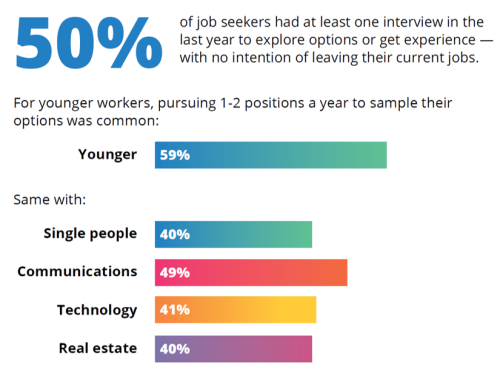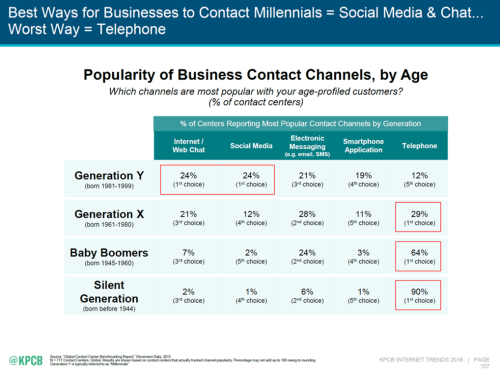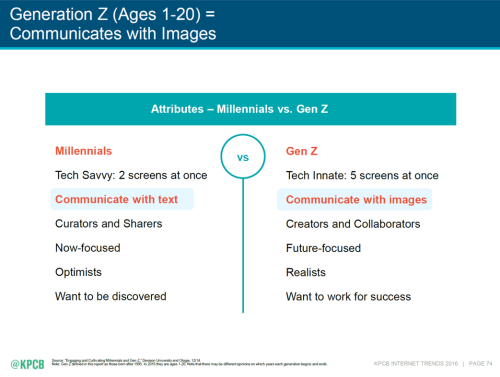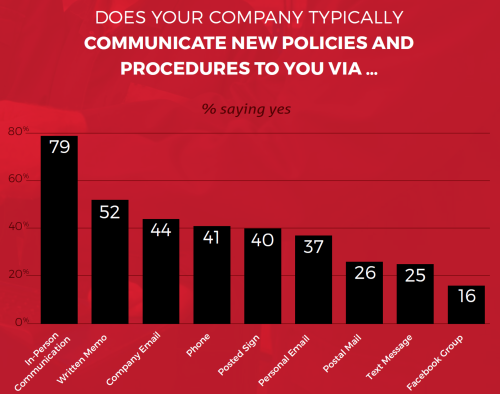
Jobvite’s annual Job Seeker Nation Study was published a couple of weeks ago. They took a whole new approach, given the current political environment in the U.S., and it’s fascinating. Subtitled, Finding the Fault Lines in the American Workforce, it looks at how divided our nation really is when it comes to attitudes and actions related to changing jobs.
“If the past year taught us anything, it’s that we live in a divided nation. In fact, nearly 80% of Americans – an all-time high – believe the country is split in two. With this year’s Job Seeker Nation Survey of 2,000 Americans, we sought to define that split: who are the two groups and what does the job seeking experience look like for each? The answer surprised us: ‘Divided America’ is a myth. Sure, from 30,000 feet you see Blue vs. Red. Coast vs. Coast. But dig a couple layers deeper and you don’t find a neatly divided population… What we found is many different versions of the American job seeker.”
And then we’re off to the races with fascinating data points covering the workforce, job seekers, men, women, quitters, stayers, generations – different slices of workforce data that are sure to make you stop and think about what’s really happening with your employees.
The finding that I found most interesting had to do with job sampling. For example, more than half of the respondents are satisfied at work (64%) – but 81% of them are open to new job opportunities. Additionally, 50% had at least one interview this year to explore options – with no intention of leaving their current position! Additionally, job seekers are not as happy as they used to be. In the last year, the percentage of workers satisfied at work has plummeted 10 percentage points to 64% (from 74%). But more concerning is that 82% are open to new job opportunities. That’s a tough message for employers.
 Another fascinating data point – despite greater transparency around pay, performance and the like – is that workers routinely “sample” their options by interviewing for new jobs.
Another fascinating data point – despite greater transparency around pay, performance and the like – is that workers routinely “sample” their options by interviewing for new jobs.
 The dynamics of the workforce in 2017 are clearly not cut and dried – and certainly not as simple as Generation vs. Generation or Male vs. Female. Of course, we knew that. But this report shines a light on some more nuanced slices of the data and provides some surprising results.
The dynamics of the workforce in 2017 are clearly not cut and dried – and certainly not as simple as Generation vs. Generation or Male vs. Female. Of course, we knew that. But this report shines a light on some more nuanced slices of the data and provides some surprising results.
I look forward to this report each year. (Here’s my take on last year’s report.) The Jobvite folks always serve up a different set of data points that add depth to the planning and conversations employers are having about their workforces. This year is no different. Take a look here. You’ll find some useful insights.












